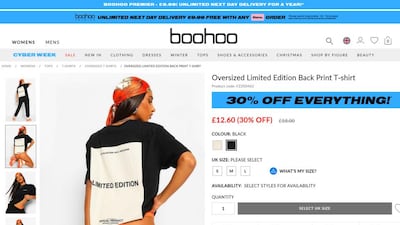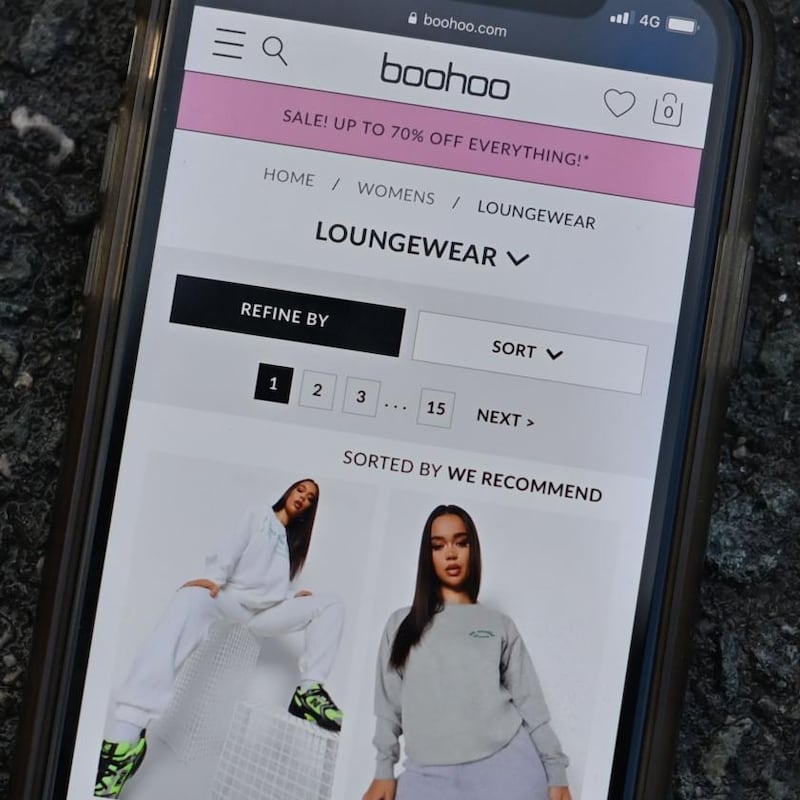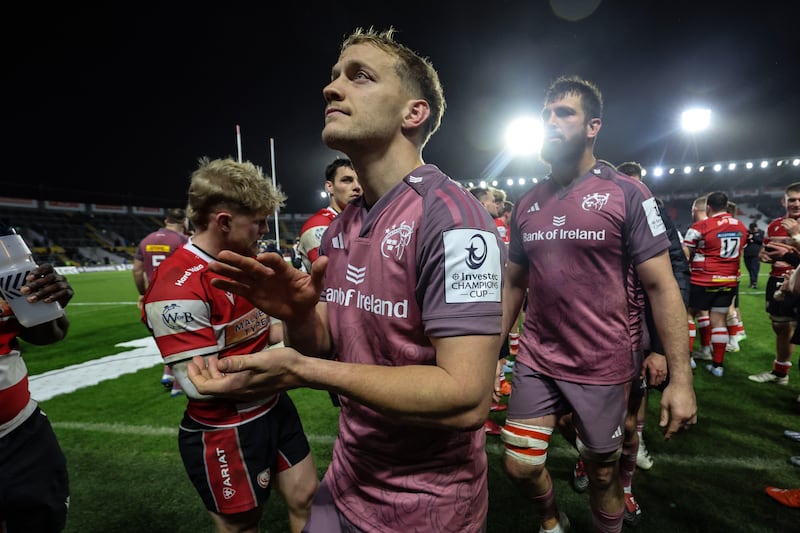This week, two controversial adverts selling women's clothes made headlines for different reasons. In a T-shirt ad for fast fashion retailer Boohoo, images showed a young model kneeling from rear-view and sitting with legs apart, lifting her T-shirt to reveal thong-style bikini bottoms. Elsewhere, Adidas's attention-grabbing marketing strategy for their expanded range of sports bras, featured a gallery of photographs of 25 pairs of women's bare breasts.
These were breasts that bore visible scars and veins. Pendulous breasts. Asymmetrical breasts. Ordinary, everyday women's breasts, in other words. The aim, Adidas said using the hashtag #supportiseverything, was to "show how diverse breasts are". "We believe women's breasts in all shapes and sizes deserve support and comfort," the company tweeted as they shared the striking images. The other aim of course, which Adidas didn't explicitly communicate, was to sell truckloads of sports bras.
Each of these campaigns had something in common: they used the female body to sell products
We believe women’s breasts in all shapes and sizes deserve support and comfort. Which is why our new sports bra range contains 43 styles, so everyone can find the right fit for them.
— adidas (@adidas) February 9, 2022
Explore the new adidas sports bra collection at https://t.co/fJZUEjvopQ#SupportIsEverything pic.twitter.com/CESqmsXOwI
This week the Advertising Standards Authority (ASA) in the UK banned the Boohoo advert after a complaint was made. The images, it said, were “sexually suggestive”.
“We also noted that neither the partial nudity nor the bikini bottoms were relevant to the product and that the images did not show the product as it would usually be worn,” added the ASA.

Meanwhile, the Adidas campaign, highlighting the need for a variety of styles to suit the many different shapes and sizes of women's breasts, sparked inevitable conversations on social media. Was the company to be applauded for desexualising breasts? After all, the clear intent of the campaign was not to titillate. Or was the ad just another example of exploiting women's bodies for commercial gain? The validity of using mammaries as a marketing tool, without even featuring the product that's for sale, was also questioned. "Would you do this with men's genitals?" one Twitter user asked.
Each of these campaigns had something in common: they used the female body to sell products, continuing a trend that has been around for as long as there has been an advertising industry. It could be argued that at least the Adidas campaign, by using raw and unfiltered images of breasts, was attempting to reduce the relentless sexualisation of this part of the female body. How were the campaigns viewed by senior women in the Irish branding sector?
Kay McCarthy, managing director and founder of MCCP, the independent strategy agency, certainly believes Adidas has created “a compelling piece of communication” and says any criticism of it was misplaced. “Women who want to exercise need different bra styles and sizes depending on their shape. The ad is normalising that issue, making the point that they have products that cater for all women. It’s a very honest image, it’s not sexualised and they are not using women’s sexuality to draw attention to the product.”
In contrast the Boohoo ad, she says, is drawing on sexuality to sell clothes while “for Adidas, sexuality is not the central point of communication. It’s an authentic image. In 2022 it should not be polarising or controversial”. McCarthy adds as part of her professional research she speaks to a lot of women particularly around health issues. “Women feel they are often stereotyped and ignored [in advertising]. A lot of the messaging aimed at women is done through the eyes of men so the nuance and authenticity in this campaign by Adidas could be seen as radical”.
Lauren Higgs is the co-founder of women led Good As Gold, a boutique creative agency she runs with her sister-in-law. They specialise in digital design and strategy. “We try as much as possible to find authenticity in brands and bring that forward in order to engage with their audiences.”
All brands, Higgs says, “have a responsibility associated with the content they put out and the message they want to get across to their consumer.” The Adidas campaign, she says, is all about representation. “We can see ourselves in it and that makes it relatable. It’s no secret we still don’t see enough real women’s bodies in advertising. Sexualised images of women’s breasts are everywhere, while photos of mother’s breastfeeding are banned from social platforms. To see a brand like Adidas lead the charge here is refreshing and gives hope to smaller brands that they can be true to their own values and promote their brand for the right reasons.
“The sentiment and message behind the tweet they sent was clear and direct - #supportiseverything. Every girl who’s ever had to do PE in the wrong sports bra can relate to and understand that message.”
Higgs says she would struggle to find a positive message in the Boohoo ad. “I think it lacks substance. “As a marketer, if it starts a conversation about how young women are being portrayed and targeted by the likes of Boohoo, I’m all for it. I think brands can do better and I don’t think Boohoo are the only brand in that category getting it wrong.”
Mary Lambkin, professor of marketing at Smurfit Business School at UCD, says the Adidas campaign got her thinking about the wider portrayal of women in advertising.
She identifies two separate issues. The first is “objectification or sexualisation of women such as in the Boohoo ad, which tries to insinuate sexuality in an otherwise harmless ad. This is the most common approach to women that has been there since the beginning of the advertising industry.” She says the Boohoo ad is a good example of this trend and points to previous ads featuring women from companies such as Abercrombie and Fitch and Victoria’s Secret.
The second issue she identifies is the “humiliation of women by advertising,” for example, female bladder incontinence products being advertised on prime time television.
Equality, at least where women's breasts are concerned, is still a long way off
“I wince every time I watch the news or the Late Late Show and in the ad break find myself having to look at ads for, say, female incontinence products. I think this is disrespectful and a case of gender discrimination. Do you think we would ever be subjected to ads featuring men with incontinence, impotence, flatulence or prostate problems or any other embarrassing condition on prime time television?”
She believes the Adidas campaign falls into this category, “more embarrassing than sexy”. Both it and the Boohoo ad, she says, follow a long tradition of provocative campaigns featuring women from companies such as Benetton, Smirnoff, Ryanair and Paddy Power.

It turns out this was not the first rap on the knuckles from the ASA for Boohoo. Two years ago a complaint was upheld against one of their ads that used the phrase “send nudes”.
At the time the company insisted, with a straight face presumably, that the “send nudes” tagline referred to a beige jacket worn by the model in the ad and not to the practice of sending nude photos. The ASA begged to differ saying the choice of advertising copy made light of a “potentially harmful social trend”. In this ruling, Boohoo was told to make sure all future advertising was “socially responsible”.
The final twist in this tale of these two controversial ads relates to the Adidas campaign. While on Twitter, the full ad could be shown in all its authentic glory, over on Instagram, the nipples on the breasts had to be blurred and obscured.
This is because despite the ongoing and extremely vocal Free The Nipple campaign, that part of a women’s anatomy is still banned from the platform. Men’s nipples, meanwhile, are not subject to Instagram censorship.
Proof that equality, at least where women’s breasts are concerned, is still a long way off.




















